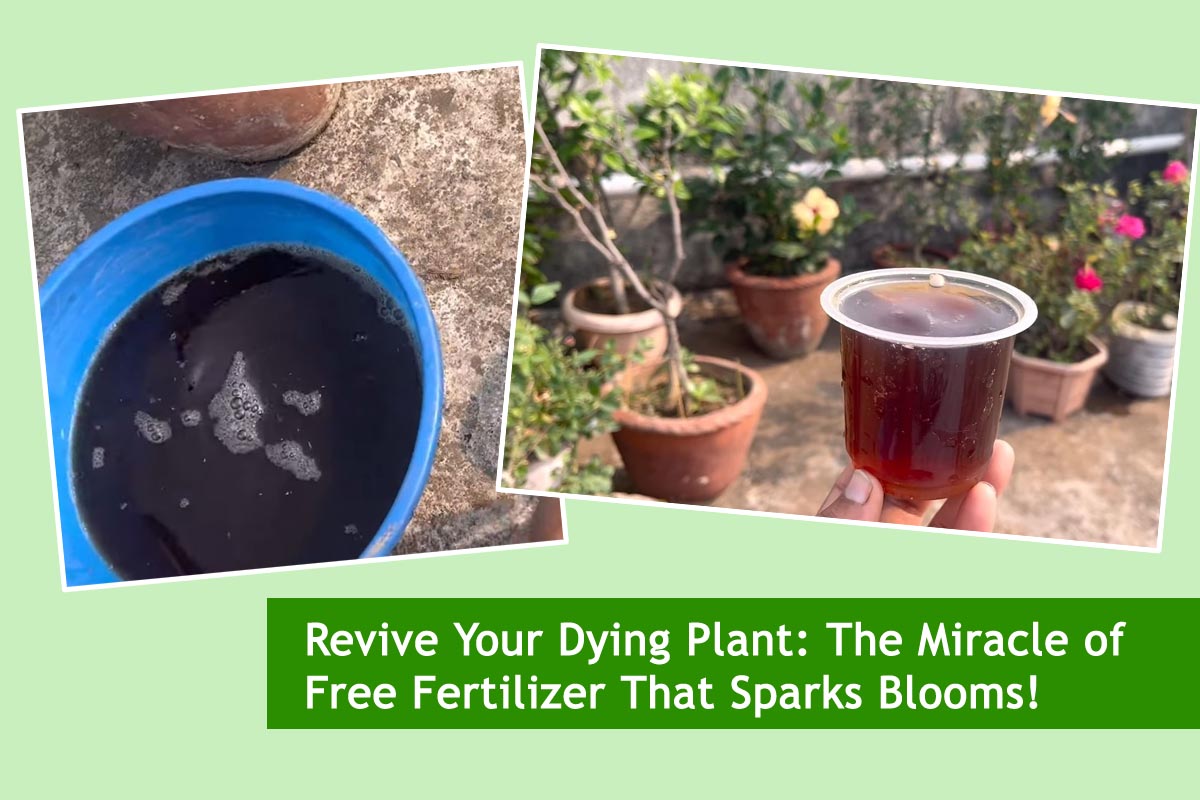
Revive Your Dying Plant: The Miracle of Free Fertilizer That Sparks Blooms!
In today’s bustling world, amidst the concrete jungles and urban landscapes, many of us yearn to bring a touch of nature into our lives. Houseplants serve as a bridge to the natural world, offering solace and tranquility within our homes. However, despite our best efforts, even the most well-intentioned plant parents may find themselves faced with a wilting, struggling plant.
But fear not! There’s hope for your drooping green companion yet. In this guide, we’ll explore the transformative power of a simple, free fertilizer that can breathe new life into your dying plant and coax it into a vibrant state of bloom.
Understanding the Plight of a Dying Plant
Before we delve into the solution, it’s crucial to understand why your plant might be struggling. There are several common culprits:
Lack of Nutrients:
Plants require essential nutrients to thrive, and if these are lacking in the soil, your plant’s growth and health can suffer.
Also Read This : Mastering the Art of Watering: Keeping Your Garden Green Year-Round
Overwatering or Underwatering:
Incorrect watering practices can lead to root rot or dehydration, both of which can cause a plant to wilt and decline.
Poor Drainage:
Soil that doesn’t drain properly can suffocate the roots, leading to a host of issues including nutrient deficiencies and root rot.
Environmental Factors:
Changes in light, temperature, humidity, or exposure to drafts can stress plants, causing them to wilt or drop leaves.
Identifying the specific issue affecting your plant is the first step towards its revival.

Also Read This : 7 Bedroom-Friendly Plants to Transform Your Space
The Miracle of Free Fertilizer
Now, let’s introduce the hero of our story: free fertilizer. But what exactly is this miraculous elixir, and how can it breathe new life into your dying plant? The answer lies in compost.
Compost is a nutrient-rich soil amendment made from organic matter such as kitchen scraps, yard waste, and other biodegradable materials. It’s often referred to as “black gold” due to its incredible ability to improve soil structure, retain moisture, and provide plants with a balanced array of essential nutrients.
Also Read This : The Science Behind Planting Tomatoes with Coffee Grounds for Rapid Growth
The Benefits of Compost for Your Plants
Nutrient-Rich Soil:
Compost is teeming with beneficial microorganisms and essential nutrients like nitrogen, phosphorus, and potassium, which are vital for plant growth.
Improved Soil Structure:
Compost helps to loosen compacted soil, allowing roots to penetrate more easily and access water and nutrients.
Water Retention:
The organic matter in compost acts like a sponge, holding moisture in the soil and reducing the need for frequent watering.
Natural Pest and Disease Resistance:
Healthy, nutrient-rich soil promotes strong plant growth, making plants more resilient to pests and diseases.
Also Read This : Unveiling the Best Liquid Fertilizer for Thriving Indoor Plants
How to Use Compost to Revive Your Dying Plant
Top Dressing: Gently spread a layer of compost around the base of your plant, taking care not to cover the stem or foliage. Water thoroughly to allow the nutrients to seep into the soil.
Compost Tea: Steep a handful of compost in water for a few days to create a nutrient-rich compost tea. Strain out the solids and use the liquid to water your plants.
Incorporation into Potting Mix: Mix compost into your potting soil to replenish nutrients and improve soil structure before repotting your plant.
Also Read This : Troubleshooting Yellowing Hibiscus Buds: Essential Tips for a Blossoming Garden

Case Studies: Success Stories of Plant Revival
To illustrate the transformative power of compost, let’s look at a few real-life examples of plants that were brought back from the brink of death:
The Wilting Orchid: Sarah’s beloved orchid had seen better days, with drooping leaves and lackluster blooms. After top-dressing the soil with compost and adjusting her watering routine, the orchid bounced back with vigor, producing vibrant flowers and lush foliage.
The Suffering Succulent: Jack’s succulent collection was struggling in the dry indoor environment, with leaves turning yellow and mushy. He started incorporating compost into his potting mix and noticed a dramatic improvement in his succulents’ health, with plump leaves and robust growth.
Also Read This : Unlocking the Secret to Keeping Your Curry Leaf Plant Green Year-Round: One Simple Addition
Conclusion: Embrace the Power of Compost
In the quest to revive a dying plant, compost emerges as a hero, offering a natural and sustainable solution to common gardening woes. By harnessing the power of organic matter, you can breathe new life into your struggling plants and create a thriving indoor oasis.
So, the next time you notice your plant looking a little worse for wear, don’t despair. Reach for the black gold of compost, and watch as your green companions spring back to life, bursting forth with vitality and blooms. With a little care and the magic of compost, your dying plant can once again flourish, bringing joy and beauty to your home.




